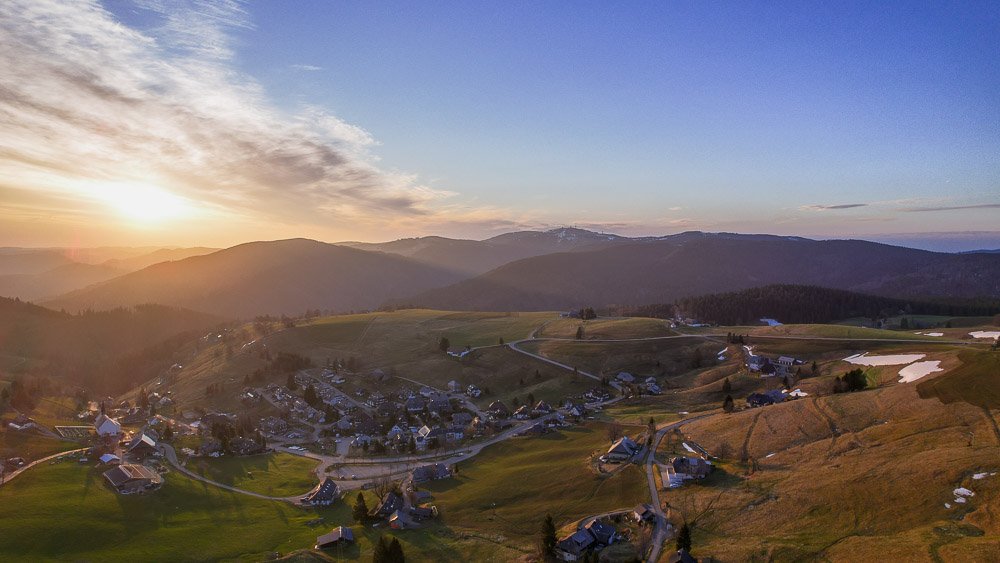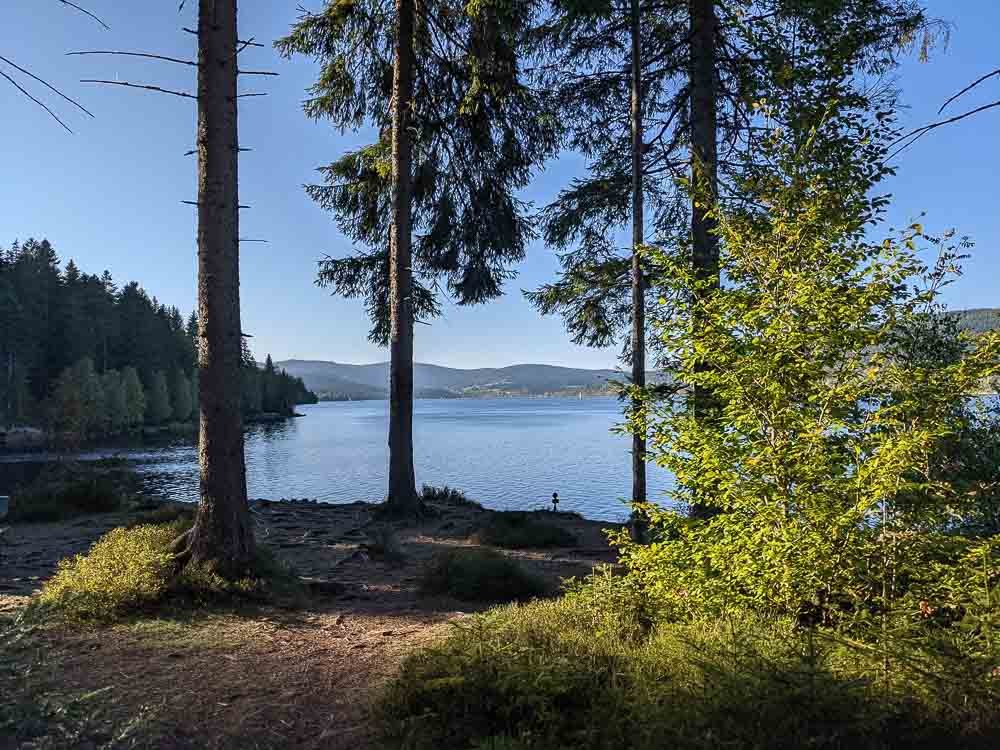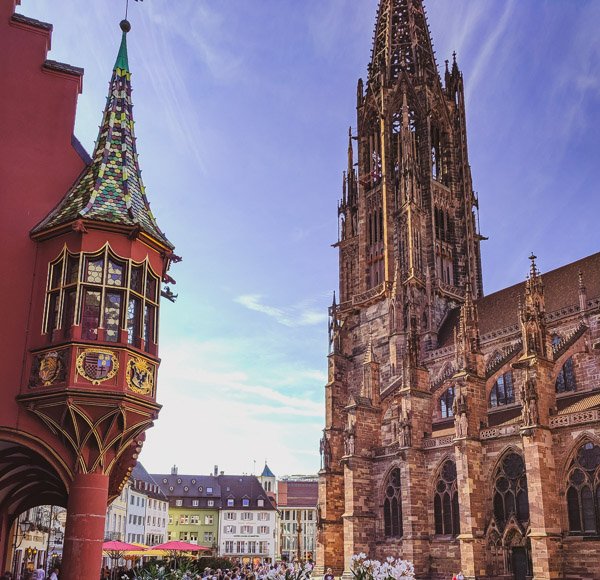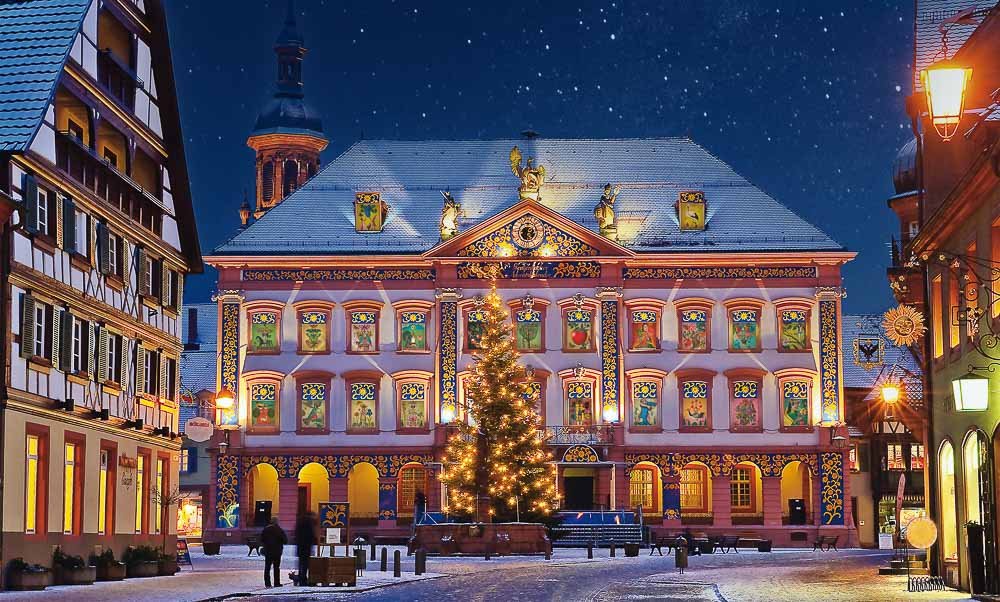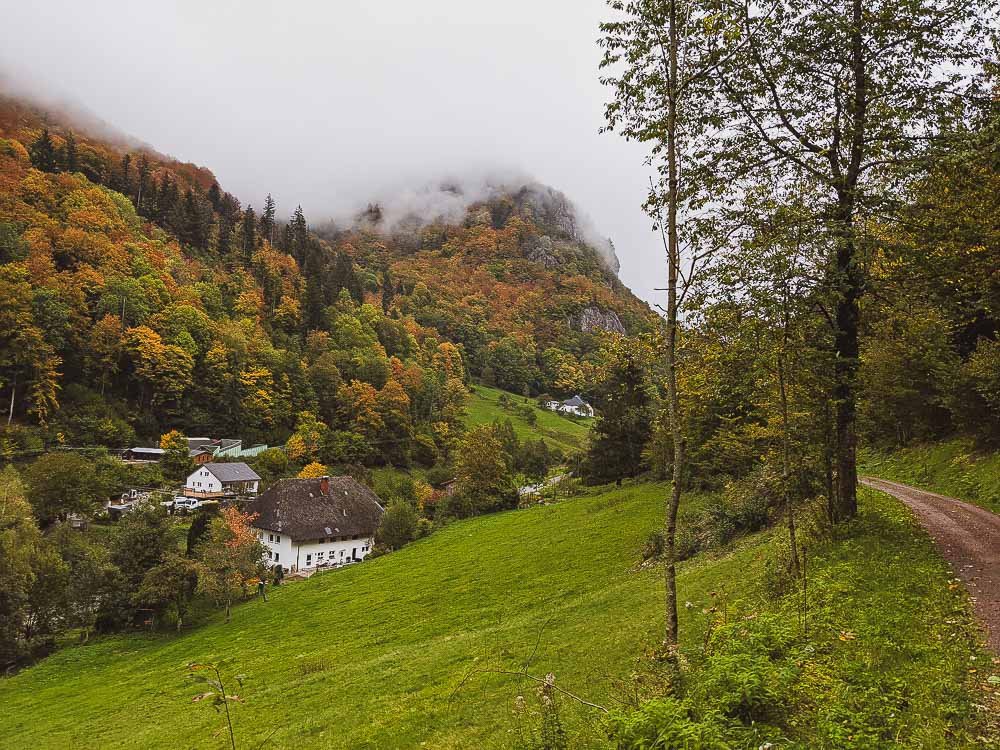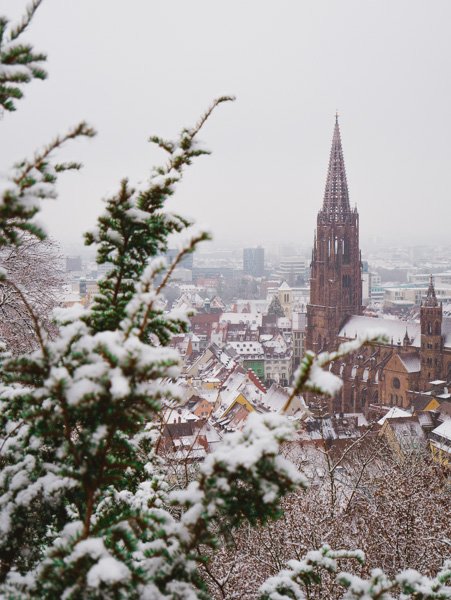Explore the Black Forest (2024): Your Ultimate Guide to Germany's Mystical Region of Adventure, Culture, and Culinary Delights
Nestled in southwest Germany, the Black Forest, or Schwarzwald, is a captivating region known for its picturesque landscapes, rich cultural heritage, and diverse outdoor activities. This article aims to provide a comprehensive guide to the Black Forest, offering insights into its history, attractions, and practical information for those planning a visit. From verdant forested hills and serene lakes to charming traditional towns and a wealth of recreational activities, the Black Forest is an ideal destination for all types of travelers.
DISCLOSURE: This post contains affiliate links. This means that, at no cost to you, the Black Forest Family may earn a commission if you click through to make a purchase. To learn more, please read our disclosure for more information.
Exploring the Landscapes and Natural Beauty of the Black Forest
The landscape and terrain of the Black Forest are as diverse as they are stunning, offering a mix of natural features that appeal to explorers of all kinds.
Forested Hills and Mountains:
The Black Forest is renowned for its dense, evergreen forests that stretch across rolling hills and rugged mountains. The highest peak, Feldberg, reaches 1,493 meters (4,898 feet) and provides breathtaking views of the surrounding area.
Schluchsee from the hiking path around the lake.
Lakes and Rivers:
The region is dotted with serene lakes such as Lake Titisee and Lake Mummelsee, providing perfect settings for boating, swimming, and picnicking. The Rhine River forms the western border of the Black Forest, and its tributaries weave through the region, creating picturesque valleys.
Valleys and Meadows:
Interspersed with the dark forests are lush valleys and open meadows that support agriculture, particularly the vineyards of the Ortenau and Kaiserstuhl areas. The Kinzig Valley (near the amazing town of Gengenbach) is one of the most fertile and is known for its traditional Black Forest farms.
The famous Black Forest Triberg Waterfalls.
Waterfalls and Geologic Features:
The Black Forest is home to Germany's highest waterfalls, the Triberg Waterfalls, cascading down in seven major steps. Additionally, the region has unique geological formations such as the iconic red sandstone rocks of the Pfalz region.
Wildlife Habitats:
The diverse ecosystems within the Black Forest provide habitats for a variety of wildlife. Deer, wild boar, foxes, and numerous bird species can be spotted in different parts of the forest.
Thermal Springs and Caves:
In the northern part of the Black Forest, thermal springs feed famous spa towns like Baden-Baden. The region also boasts several caves, such as the Hasenloch Cave and the Erdmanns Cave, which are accessible to visitors.
This mixture of dense forests, sparkling water bodies, fertile valleys, and geothermal wonders makes the Black Forest's landscape a multifaceted and intriguing environment for outdoor enthusiasts, nature lovers, and anyone looking to immerse themselves in a unique natural setting.
The 11th century Burgruine Schwarzenburg in Waldkirch.
The Black Forest through the Ages
Prehistoric and Roman Times
The Black Forest region has been inhabited since prehistoric times, with numerous artifacts discovered from the Paleolithic, Neolithic, and Bronze Age periods. During the Roman era, the region was part of the Roman province of Germania Superior. The Romans were drawn to the region's rich mineral resources and constructed roads, buildings, and fortifications, many of which can be seen today in archaeological sites such as the Roman Bath Ruins in Badenweiler.
Middle Ages and Early Modern Period
The Middle Ages brought significant change to the Black Forest as monasteries were founded, leading to the clearing of forests for agriculture and settlement. The region's abundant timber resources led to the growth of the lumber industry and the development of glass-making and charcoal production. The Black Forest also saw an increase in mining activities during this period.
During the Early Modern Period, the region was ravaged by the Thirty Years War and subsequent territorial conflicts. However, it was also during this time that the region's famous clock-making industry began to flourish.
19th Century to the Present
The 19th century brought the advent of tourism to the Black Forest, spurred by the Romantic movement's fascination with nature. The region's idyllic landscapes became a popular retreat for city dwellers. The introduction of railway lines made the Black Forest more accessible, further boosting its popularity as a tourist destination.
During both World Wars, the Black Forest served strategic purposes, with its factories converted for war production and its terrain used for defensive positions.
In recent decades, the Black Forest has evolved into a modern and sustainable region, balancing economic development with the preservation of its natural and cultural heritage. The establishment of the Black Forest National Park in 2014 marked a significant step towards the region's conservation efforts.
Highlighting the Unique Flora and Fauna of the Black Forest
The Black Forest's rich ecosystem provides a habitat for a wide array of plants and animals, making it an exciting destination for nature enthusiasts.
Yellow flowers cover the hills of the Black Forest in the spring time.
Flora:
Trees:
The region gets its name from the dense, dark fir and spruce trees that dominate the landscape. Other tree species include beech, oak, and pine.
Wildflowers:
Spring and summer bring a burst of color with wildflowers such as orchids, wild daffodils, and edelweiss gracing the meadows and hillsides.
Fungi and Mosses:
The moist, shaded forest floor supports a variety of fungi and mosses, contributing to the overall biodiversity of the region.
Medicinal Herbs:
The Black Forest is known for an abundance of herbs like St. John's wort and arnica, which have been used in traditional medicine for centuries.
Fauna:
Mammals:
Deer, wild boar, badgers, and the elusive lynx are some of the mammal species that call the Black Forest home.
Birds:
Bird watchers can spot species such as the black woodpecker, eagle owl, and the rare capercaillie (endangered species), which is considered a symbol of the Black Forest.
Aquatic Life:
The lakes and rivers are teeming with fish such as trout and carp, and also support other aquatic organisms.
Insects:
A diverse range of insects, including numerous species of butterflies, add to the ecological richness of the region.
Protected Species:
Efforts have been made to protect and reintroduce species that have become rare, such as the peregrine falcon and wildcat.
The Black Forest's diverse landscapes, ranging from dense forests and sunny meadows to clear lakes and rivers, provide varied microhabitats that support this rich biodiversity. Whether you are hiking, bird watching, or simply exploring, the unique flora and fauna of the Black Forest add layers of fascination and beauty to any visit. It is a living testament to the region's natural wealth and a compelling reason for responsible and sustainable tourism.
Exploring the Towns and Cities of the Black Forest, Germany
(c) Baden-Baden Kur & Tourismus GmbH
Baden-Baden: Spa Town Extraordinaire
Perched on the edge of the Black Forest, Baden-Baden is famed for its thermal baths that have been a magnet for wellness seekers since Roman times. The town’s elegant architecture, upscale shopping, and the famous Kurhaus casino make it a sophisticated destination. The Lichtentaler Allee park and the Rose Garden provide a tranquil retreat, while the Fabergé Museum offers a peek into the world of luxury art.
Freiburg Münster and old Rathaus at the Münsterplatz.
Freiburg: The Eclectic University City
Freiburg is known for its beautiful old town with its iconic Freiburg Münster, cobbled streets, and charming canals. As a vibrant university city, it boasts an energetic atmosphere, numerous eateries, and shopping destinations. Schlossberg hill offers a panoramic view of the city and the surrounding Black Forest, not to mention a great beer garden!
Triberg: The Heart of Traditional Crafts
Triberg is home to Germany's highest waterfalls, but it's equally known for its rich tradition of clock-making. You can visit the House of 1000 Clocks or the Black Forest Museum to delve into the history and craftsmanship of the world-renowned cuckoo clocks.
Titisee-Neustadt: Lake-side Serenity
Centered around the beautiful Lake Titisee, this town is an ideal destination for water sports during summer and a peaceful retreat year-round. You can enjoy a boat ride on the lake, stroll around the promenade, or explore local shops selling Black Forest specialties.
Gengenbach: The Storybook Town
Gengenbach, with its well-preserved medieval town center, is often compared to a storybook setting. Its half-timbered houses, historic town walls, and cobblestone streets ooze charm. The town is famous for having one of Germany's most beautiful Christmas markets, where the town hall is transformed into a giant advent calendar.
Schluchsee: A Tranquil Escape in the Heart of the Black Forest
Schluchsee is a charming town in the heart of the Black Forest, renowned for its stunning lake, the largest in the region. This tranquil spot is perfect for water sports, including sailing, windsurfing, swimming, and fishing, while the surrounding paths offer picturesque views for walking and cycling. The town itself is a blend of traditional Black Forest homes, local cuisine, and nearby attractions like Feldberg Mountain, the Museum of Clockmaking, and the historic Black Forest Railway.
Whether indulging in seasonal events such as the Christmas Market and summer festivals or venturing to explore the natural beauty and neighboring sights, Schluchsee provides a unique and authentic Black Forest experience that combines natural splendor with cultural charm.
Learn more about Schluchsee here!
Each of these towns and cities brings a unique aspect of the Black Forest to life, combining to offer a comprehensive and multifaceted experience of the region.
What to Do in the Black Forest: A Comprehensive Guide to Activities and Experiences
Family-Friendly Activities
For those traveling with children, the Black Forest offers plenty of family-friendly attractions. The Steinwasen Park offers various rides and a wildlife park. The Badeparadies Schwarzwald is a fun-filled water park with a wellness area for adults.
We have written a dedicated article of all of the top things to do in the Black Forest for families. Go here to get some great ideas!
Outdoor Sporting Activities in the Black Forest
The Black Forest's diverse landscapes and natural features make it an outdoor enthusiast's paradise. From its dense forests and sparkling lakes to its towering peaks and meandering rivers, there's a wide range of sporting activities to engage in, catering to all fitness levels and interests.
Ashton hiking on Feldberg (highest elevation) in the Black Forest.
Hiking and Trekking:
With thousands of kilometers of well-marked trails, ranging from leisurely walks to challenging hikes, the Black Forest offers some of Germany's best hiking experiences. Iconic trails like the Westweg and Schluchtensteig are must-explores. Komoot is a good place to find GPS tracks for great hikes.
Cycling and Mountain Biking:
Cyclists can find routes suitable for every skill level, including family-friendly paths and challenging mountain bike trails. There are a plethora of different bike paths and routes littered through the Black Forest. Komoot is a good place to find GPS tracks for Black Forest cycling routes.
Water Sports on Lakes and Rivers:
The region's lakes and rivers provide opportunities for kayaking, canoeing, sailing, and fishing. Schluchsee and Titisee are prime locations for water-based activities.
Winter Skiing, Snowboarding, Cross-country skiing, sledding:
In winter, the Black Forest transforms into a winter sports haven. The Feldberg region is renowned for its skiing and snowboarding facilities, with slopes for beginners to experts. In addition, there are sledding hills and tracks for snow shoeing. Cross-country skiing is especially popular (and free!), with groomed trails littered throughout the Black Forest.
Golfing:
The Black Forest is home to several beautiful golf courses set against the stunning backdrop of the region's landscapes. Golf enthusiasts will find plenty of options to enjoy their sport.
Hohenzollern Castle.
Exploring the Castles of the Black Forest
The Black Forest's majestic castles are gateways to a bygone era, where history, romance, and architectural brilliance come alive. From the fairytale-like Hohenzollern Castle to the atmospheric ruins of Burg Rötteln, each castle tells a unique story. Visitors can embark on guided tours, witness historical reenactments, or even stay overnight in castle accommodations for an immersive experience. The fusion of panoramic vistas with centuries-old artistry makes exploring the Black Forest's castles an unforgettable adventure, connecting travelers to the region's noble past and inspiring awe and reverence for these magnificent structures.
Agricultural Experiences in the Black Forest
The German Black Forest region, known for its fertile landscapes and agricultural heritage, offers an array of enriching agricultural experiences for visitors. The connection to the land can be felt throughout the area, and travelers can immerse themselves in the rural traditions of this iconic region.
Farm Visits and Tours:
Explore local farms that produce everything from dairy to honey, often with guided tours to allow a hands-on experience. Some farms offer overnight stays, where visitors can partake in daily farming activities.
Vineyards on the hills outside of Gengenbach.
Traditional Winemaking and Wine Tasting:
The vineyards of the Black Forest are renowned for their exquisite wines. Visitors can tour wineries, learn about traditional winemaking processes, and enjoy tastings.
Seasonal Fruit Picking:
Depending on the season, join in the harvest of cherries, apples, grapes, and other fruits. Many farms allow you to pick your own fresh produce, offering a delightful connection to the land.
Münstermarkt in Freiburg.
Local Farmers' Markets:
Experience the vibrant local farmers' markets where fresh, seasonal products are sold directly by the farmers. Enjoy the opportunity to taste and purchase locally-sourced products, including cheese, jams, meats, and baked goods.
Highland cattle also roam many local farms.
Wildlife Watching in the Black Forest
The Black Forest's dense woodlands, flowing rivers, and diverse ecosystems are home to an array of fascinating wildlife. For nature enthusiasts and wildlife lovers, the region offers incredible opportunities to observe and appreciate animals in their natural habitat.
Guided Nature Walks and Birdwatching:
Expert-guided nature walks are available to help you spot and identify local fauna. Birdwatchers will delight in the variety of bird species, including eagles, woodpeckers, and owls.
Animal Parks and Reserves:
Visit specialized parks and reserves that focus on local wildlife, such as the Alternativer Wolf- und Bärenpark Schwarzwald, where wolves and bears are cared for in a near-natural environment.
The Mundenhof near Freiburg offers an opportunity to observe domestic and exotic animals in spacious enclosures.
Nature Photography Opportunities:
Photographers will find ample subjects for their lenses, from elusive deer to playful river otters. The changing seasons offer a dynamic backdrop for wildlife photography.
Keep in mind, drones are banned in much of the Black Forest, especially those which are designated as a nature conservation area.
Eco-friendly Exploration:
Many of the Black Forest's natural areas are protected, so mindful and respectful exploration is encouraged. Follow marked trails, adhere to guidelines, and consider joining eco-friendly tours that prioritize conservation.
White asparagus with salmon Flammkuchen.
Savoring the Flavors: Food to Eat in the Black Forest
The Black Forest's culinary landscape is as diverse and captivating as its natural scenery. Influenced by the region's agricultural traditions and seasonal bounty, the local cuisine offers a delightful gastronomic experience for food lovers.
Read about 12 Traditional Black Forest Foods here to get your mouth watering!
Learn more about traditional German breakfasts here!
Regional Specialties and Restaurants:
Indulge in traditional Black Forest dishes like "Schwarzwälder Schinken" (Black Forest ham), "Maultaschen" (stuffed pasta), and "Flammkuchen" (tarte flambée). Enjoy hearty meals at traditional inns known as "Gasthäuser," or dine in style at Michelin-starred restaurants.
Cooking Classes with Local Ingredients:
Participate in cooking classes that showcase the region's fresh produce, where you can learn to prepare authentic Black Forest dishes.
A piece of Schwarzwälder Kirschtorte at Lake Titisee.
Black Forest Cake and Other Iconic Dishes:
No visit would be complete without tasting the world-famous Black Forest cake, known as "Schwarzwälder Kirschtorte," layered with cherries, cream, and chocolate. Try other local pastries and desserts that reflect the region's culinary heritage.
Rothaus Brewery outside beer garden.
Beers Breweries and Beer Gardens:
Explore the rich beer culture of the Black Forest, with its many large and small batch breweries and traditional beer gardens. Sample a wide range of beers that showcase the creativity and skill of local brewers. Rothaus Brewery, near Schluchsee, is a large but interesting brewery to visit in the Black Forest. They have a stunning location surrounded by trees, their own beer garden, and a playground for kids.
Wine, gin and Schnapps Tasting:
The Black Forest also has a strong wine-making tradition, particularly in the Baden region. Participate in wine tastings or visit local distilleries to try the famous fruit schnapps. Gin has also become a popular drink within Germany, with many local makers in the Black Forest.
Read our review of the famous Monkey 47 gin distillery here.
Festivals and Events in the Black Forest: A Celebration of Culture and Tradition
The Black Forest is a lively hub for festivals and events that celebrate the region's rich cultural heritage, seasonal traditions, and artistic creativity. These gatherings offer an extraordinary way to engage with the local community and partake in the joyous spirit of the area.
Information for these events vary greatly by town, but you can easily find them on their local tourism websites.
Traditional Cultural Celebrations:
Witness timeless customs and folklore at events like the "Fasnacht" (Carnival), where colorful masks and costumes take center stage. Join the harvest celebrations like the "Almabtrieb," where beautifully decorated cattle are paraded through towns.
Music and Art Festivals:
Enjoy a diverse array of music festivals, from classical concerts in historic settings to contemporary music events. Explore local art festivals that showcase the talents of regional artists, sculptors, and craftsmen.
Gengenbach Rathaus, Advent Calendar. (c) Der Kultur- und Tourismus GmbH Gengenbach
Seasonal and Thematic Events:
Experience the magic of Christmas Markets in towns like Freiburg and Gengenbach, where twinkling lights, festive decorations, and seasonal treats create a heartwarming ambiance. Visit themed events like the Black Forest Cake Festival, where the region's most famous dessert takes center stage.
See the Top 5 Black Forest Christmas Markets here!
Local Craft Fairs and Exhibitions:
Discover the craftsmanship and innovation of the Black Forest at local craft fairs, where handmade goods, from cuckoo clocks to wood-carvings, are displayed and sold.
Essential Travel Tips and Information for the Black Forest Visit
Best Time to Visit Germany’s Black Forest
Deciding when to visit the Black Forest largely depends on what activities you want to engage in.
Spring and Summer (April to September):
The weather during these seasons is typically warm and pleasant, with temperatures ranging from 15°C to 25°C (59°F to 77°F). This is an ideal time for outdoor activities such as hiking, cycling, and swimming. The forests are lush and green, the flowers are in bloom, and the lakes are perfect for a refreshing dip. It's also a popular time for festivals in the region.
Autumn (October and November):
Autumn in the Black Forest is particularly beautiful, as the forests turn vibrant shades of yellow, orange, and red. Temperatures vary between 5°C to 15°C (41°F to 59°F), and the weather is generally crisp and clear. This is an excellent time to enjoy scenic drives and walks.
The Freiburg Münster under the snow.
Winter (December to March):
The Black Forest transforms into a winter wonderland with ample opportunities for snow sports. Temperatures usually range from -6°C to 4°C (21°F to 39°F), with the higher elevations seeing more snowfall. Skiing, snowboarding, and snowshoeing are popular activities. Plus, visiting Christmas markets in Freiburg and the Ravenna Gorge can be a magical experience.
See the Top 5 Black Forest Christmas Markets here!
Getting There and Around
The closest major international airports to the Black Forest are in Basel, Frankfurt, and Zurich. From these cities, the Black Forest is easily accessible by train or car. The region is well-served by the German railway system (Deutsche Bahn), with frequent connections to major towns such as Freiburg, Baden-Baden, and Offenburg.
Once there, the Black Forest's extensive public transportation system, including buses and trains, makes it easy to explore the region. The Black Forest Tourism Card (KONUS Card), offered by many accommodations, allows for free travel on public transportation in the area. For more flexibility, consider renting a car.
Accommodation
The Black Forest offers a range of accommodation options to suit every budget and preference, from luxury wellness hotels and traditional guesthouses (Gasthöfe) to self-catering holiday apartments (Ferienwohnungen) and campsites. For a unique experience, consider staying in a traditional Black Forest farm.
Language
The official language is German. While English is commonly spoken in tourist areas and larger cities, it might be helpful to learn a few basic German phrases, particularly in more rural areas.
If you’re interested in learning the German language, we highly recommend using Lingoda!
Currency
Germany is part of the Eurozone, and the currency is the Euro (€). Credit cards are widely accepted, but it's always handy to have some cash, especially in smaller establishments and for public transportation. Not everywhere accepts credit cards.
Health and Safety
Germany has a high standard of healthcare, and pharmacies are widely available. Travel insurance that covers medical expenses is recommended. The Black Forest is generally safe, but as with any travel destination, it's advisable to take standard precautions to secure personal belongings.
Allianz is a great option for booking your travel insurance.
Many windmills like these (on Schauinsland) can be found around the Black Forest.
Sustainable Tourism in the Black Forest
Commitment to Sustainability
The Black Forest has made sustainability a cornerstone of its tourism strategy. The region is committed to preserving its unique natural and cultural heritage while promoting economic growth and development. This is reflected in the implementation of numerous sustainability initiatives, including renewable energy projects, eco-friendly transport options, and responsible tourism practices.
Sustainable Accommodation Options
The region boasts numerous eco-certified accommodations, from hotels to guesthouses, that adhere to strict environmental standards. These establishments prioritize energy efficiency, water conservation, waste reduction, and use of local and organic food.
Eco-Friendly Transportation
The Black Forest promotes eco-friendly transportation through the KONUS guest card, which provides visitors with free use of the region's public transportation network, encouraging them to leave their cars behind. In addition, many towns and cities offer bike rental services, and the region has an extensive network of cycling paths.
Local and Organic Food
Many restaurants and cafes in the Black Forest prioritize locally sourced, organic ingredients, supporting local farmers and reducing food miles. The region's cuisine is deeply rooted in its farming traditions, and sustainable food practices are a natural extension of this heritage.
Nature Conservation and Education
The establishment of the Black Forest National Park in 2014 underscored the region's commitment to nature conservation. The park offers guided tours and educational programs to increase awareness of the importance of biodiversity and conservation.
In addition, there are numerous nature reserves and protected areas throughout the Black Forest, and many hiking trails have interpretive signage to educate visitors about the region's flora and fauna.
Sustainable Activities and Experiences
Sustainable activities and experiences abound in the Black Forest. This includes hiking and biking on designated trails, wildlife watching, and visiting traditional farms and craft workshops. Participating in these activities not only minimizes environmental impact but also fosters a deeper appreciation of the region's natural and cultural heritage.
The Black Forest's commitment to sustainability ensures that it can be enjoyed by generations to come. By choosing sustainable options, visitors can contribute to the preservation of this beautiful region while enjoying an enriching and guilt-free travel experience.
Conclusion: An Unforgettable Journey Through the Black Forest
The Black Forest is a region that transcends its breathtaking landscapes, delving into a rich tapestry of culture, tradition, adventure, and gastronomy. From the rugged beauty of its natural wonders to the charm of its towns and cities, every facet of the Black Forest offers unique experiences that awaken the senses and stir the soul.
Visitors will find themselves enchanted by the timeless elegance of its castles, the lively spirit of its festivals, the innovation and authenticity of its culinary delights, and the thrill and serenity of its outdoor activities. Whether seeking inspiration from its artistic heritage, indulging in its agricultural roots, or connecting with its wildlife, the Black Forest stands as a multifaceted destination that caters to every interest and passion.
A visit to the Black Forest is not merely a vacation; it's an exploration, a celebration, and a homecoming to a place where nature and culture converge in perfect harmony. It invites travelers to become a part of its story, to create their memories, and to leave with a sense of wonderment and a longing to return.
With thoughtful planning and a willingness to embrace all that the region has to offer, the Black Forest awaits to reveal its treasures and to become an unforgettable chapter in your travel journey.

